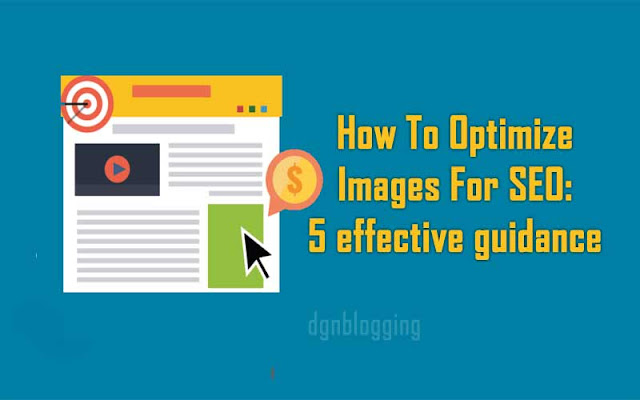 |
| How To Optimize Images For SEO |
When observed closely, each article or blog post at least has an image (image). If the blog is about a tutorial, usually more images will be used to help clarify the steps to be conveyed or strengthen the argument of the results of the tutorial topics discussed. Images can make articles more contained, attract attention and clarify intentions.
Blog images also strengthen the article content to make it stand out more to attract the attention of visitors. The combination of images and text in articles can provide better quality content when compared to articles that only consist of text only. The picture in the article can excite the mood of visitors to read.
Webmasters and bloggers know that SEO is a very important factor so that blog content gets better rankings and appears on the first page of search engine searches. Webmasters design web applications such as CMS to include features to support SEO and bloggers optimize SEO through on-page SEO and off-page SEO.
Read the article: Benefits of Adding Images Into Blog Articles
How To Optimize Images For SEO
Many bloggers focus more on optimization on blogs and articles, but less on image optimization. It is important to understand that today, many people search for images on the internet. The good news is that image competition in search engines is still small. If you do a good blog image optimization, it is very possible you get even more visitor traffic.
Images can be obtained from free image provider sites such as Pixabay, MorqueFile, and FreeDigitalPhoto or commercial image provider sites such as Shutterstock. But be careful when using image results from search engines like Google or Bing because they generally own the copyright. When you've got the right image, you need to do optimization to further improve SEO.
1. The name of the picture and how to write right.
Image SEO (image) starts from the name and method of writing the right one. Many bloggers tend to ignore names and write names for image files. Crawler robots cannot crawl images. But you can tell the crawler robot about the image used in the article.
Use images that are relevant or related to the content of the article and give a descriptive name that is rich in keywords (keywords). Such image file names can signal crawlers robots and images can be ranked better. Avoid giving names that are not descriptive.
If you write a tutorial article on how to reduce the bounce rate, you can name the image file, for example " how to reduce-bounce-rate.jpg " or other names that resemble. Use lowercase letters and dashes (-) between the two words in the image file name. The name of any image is actually not a problem, but if you want to do image optimization for SEO, use a name that is easily read by humans and crawler robots.
2. The alt attribute.
The purpose of using the alt (alternate) attribute is to provide a description of the image. When images do not appear for a reason, alt descriptions are displayed instead of images. The search engine also uses the alt attribute to determine the best image and then displays it in image search results. Take advantage of the alt attribute to bring in more visitors.
Because the alt attribute is directly related to the image, use an image that matches the article content. Fill in the alt attribute with the encryption containing the keyword. If you are writing a tutorial article about how to reduce the bounce rate, the description for alt can be alt = "how to reduce the bounce rate" or another description that resembles.
3. Image file size.
Generally, image files downloaded from image provider sites have large file sizes. You shouldn't just use the downloaded image file just like that. Using images with large file sizes can aggravate the page and increase load time. We know that page load time is an important factor in Google ranking.
You need to compress the image file to get a smaller size ((in bits) of the image file. You can use an application such as Adobe Photoshop or online tools such as TinyPNG, TinyJPG, OptimiZilla, JPEGmini, and Compressor.io to reduce the size of the image file. Small file sizes can lighten the page and reduce page load time.
4. Image dimensions.
When you have finished downloading the image from an image provider site, do not add the image directly to the article. Generally, downloaded images have large dimensions. Use image dimensions that fit the width of the blog or website content area. You can use Adobe Photoshop applications or online tools such as PicResize and PicMonkey to change the dimensions of the image as needed.
Still related to page load time, using the dimensions of the original image and changing the dimensions of the image through CSS code to adjust the width of the content area can increase page load time. Web browsers load images according to their original dimensions and the code changes the dimensions again to suit the width of the content area. A process like this will increase page load time, especially if there are enough images on one blog page.
5. Image format.
There are three choices of image formats that can be used in the article, namely JPG (JPEG), PNG and GIF. Each image format has advantages and disadvantages. But many bloggers and webmasters suggest using the JPG (JPEG) format. The reason behind this is that the JPG format (JPEG) can maintain image quality when compressed or when changing dimensions.
Tags:
seo


1 Comments
Helpful
ReplyDelete